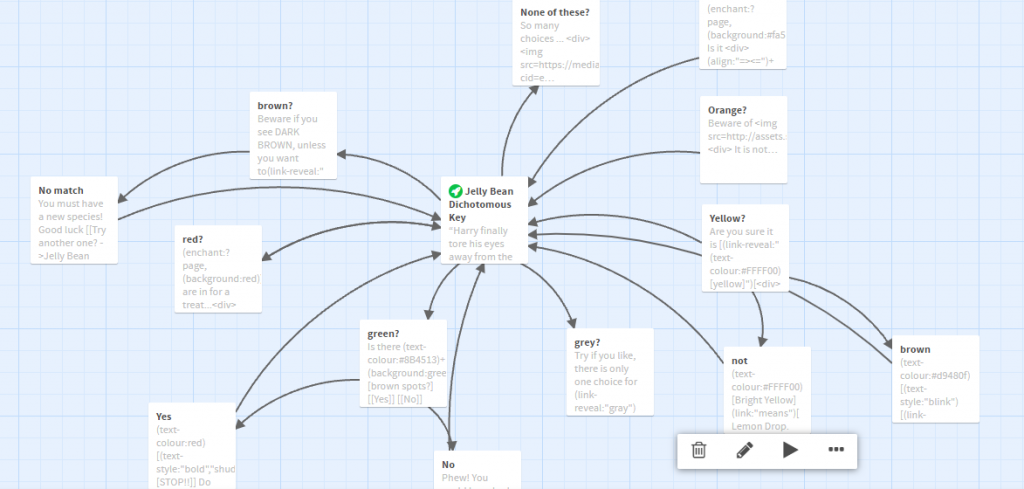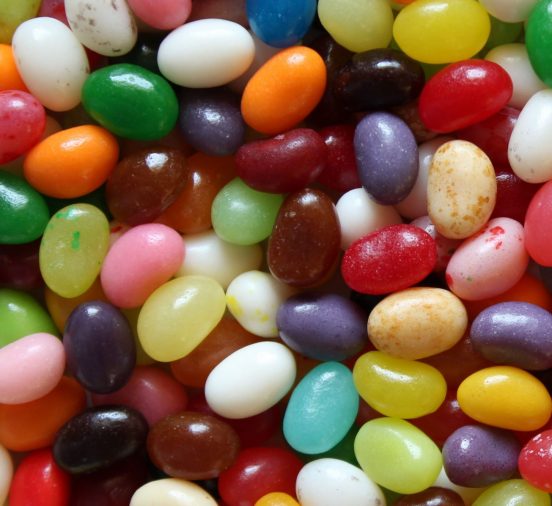Have you ever had a Bernie Bott’s Every Flavour jelly bean and had the misfortune of grabbing a vomit or dirt flavored bean? The twine I created will help you figure out the flavour you have before trying it. I am teaching dichotomous keys in my Biology class right now and I have been looking for some fun ways for students to practice classifications and there is no better way than through food and Twine.

I was introduced to Twine in the MET Gaming course but I had not had a chance to create one of my one. I am not familiar with coding but was able to learn quickly how to use hypertexts to link screens in the program and change colors of text and backgrounds by using the menus built into the program. Using different YouTube videos, I learned how to add photos, sound and video clips to make the experience more interesting for the user. I found an example of a dichotomous key for several different jellybeans and used that as my guide as I built the Twine (Crowther, 2003).
Bolter (2001) describes the connections of hypertexts as paths that are significant to reader dependent on the specific path followed to arrive at a topic. Using hypertexts, Twine is an ideal tool to allow students to identify the flavour of their colored jellybeans as they are able to link from one screen to the next dependent on physical characteristics of their specific candy. It also enables them to return to the main screen each time they found the flavor they were looking for and try a new path for another jellybean.
Grab a box of Every Flavour Jellybeans and give my Twine a try!
Zip file: Dichotomous Key
or view at https://etec540.itch.io/twine
References:
Bolter, J. (2001). Writing space: computers, hypertext, and the remediation of print. New York, NY: Routledge.
Crowther, David. (October 2003). Harry Potter and the Dichotomous Key. https://irrec.ifas.ufl.edu/media/irrecifasufledu/teach-aquaculture-/Harry-Potter.pdf
Rowling, J.K. (1998). Harry Potter and the Sorcerer’s Stone. New York. Scholastic.







